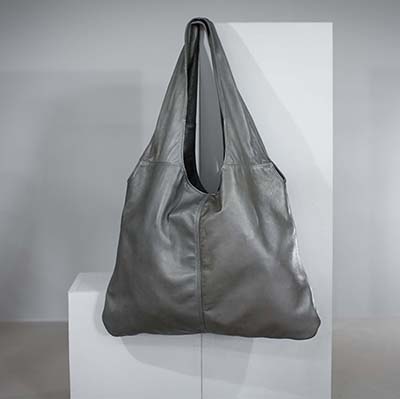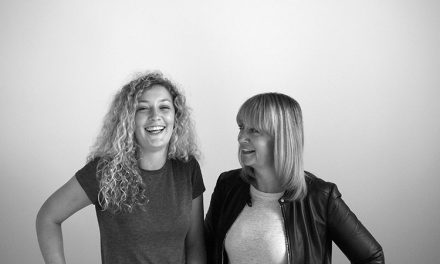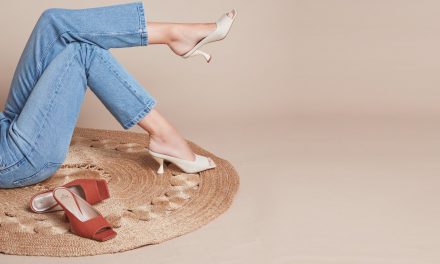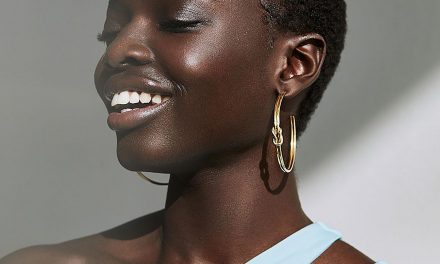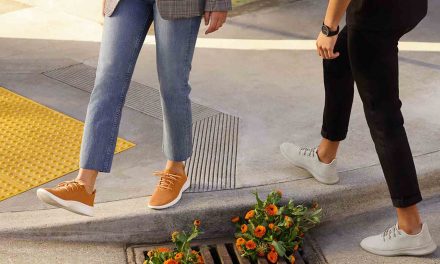Who Made Your Bag?
Have you ever considered how your handbag is made? Taylor Yates believe the carefull creation of their bags is as important as how they are worn. They invited us to explore how their Agnes handbag is made, right here in England.
When conceiving their handbag collection, it was highly important to Founders Karen and Ellen Yates that the bags be made ethically. They found Pittards in Somerset, England, established in 1826. The company sources animal skins only as by products from the meat industry and is proudly ISO 14001 Certified. It owns tanneries in Ethiopia and Yeovil in Somerset, operating to strict environmental and social regulations. Their skilled teams at the Somerset factory then work by hand to create each bag for Taylor Yates. We couldn’t resist an opportunity to visit them to find out more about what they do and see the making of a Taylor Yates’ Agnes handbag for ourselves.
Step 1: Leather Processing
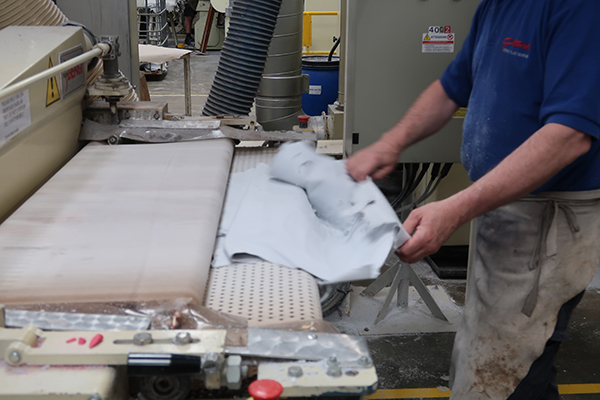
Image above: Once the hides arrive from their tannery in Ethiopia, the team set to work creating the finished leather.
Image below: The leather processing begins with shaving each hide to a specific weight, before being dyed and washed. The water is vacuumed out using a special industrial press before being cleaned in their effluent plant.
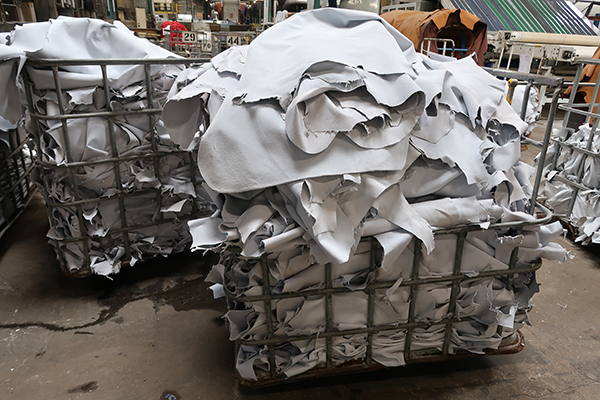
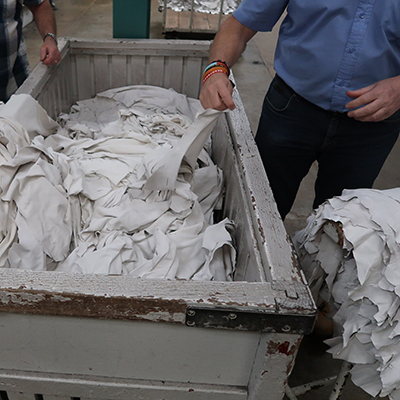
Images left and below: To add softness, the hides are then placed in a dry drum and stretched using a process called staking.
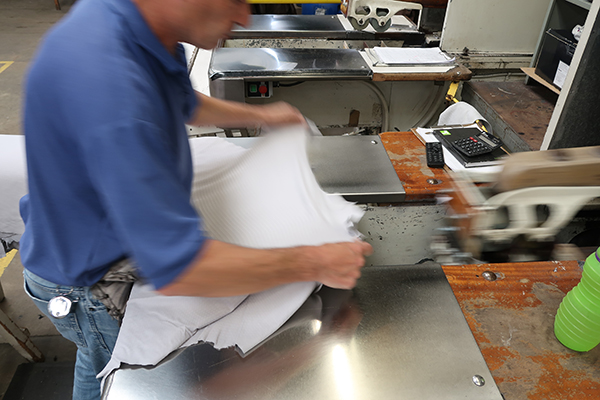
Step 2: Grading & Pattern Cutting
Image right: A specially trained team work diligently to grade each skin for colour and quality. Any that aren’t the correct colour after processing or have too many imperfections are separated. These are reused for smaller products like wallets and diaries. They can also be printed onto to minimize imperfections and make sure they can still be used for other products. Pittards are always exploring ways to minimise their waste and utilize every scrap of leather they produce.
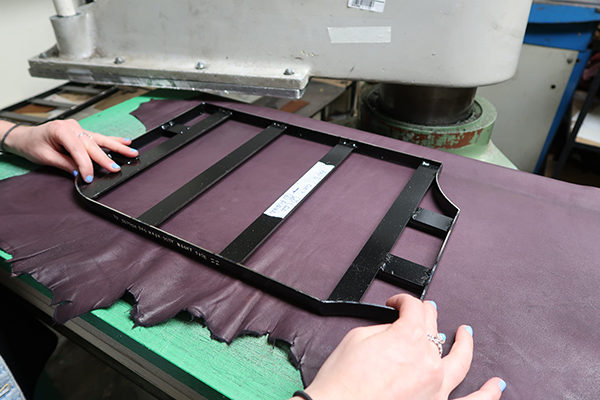
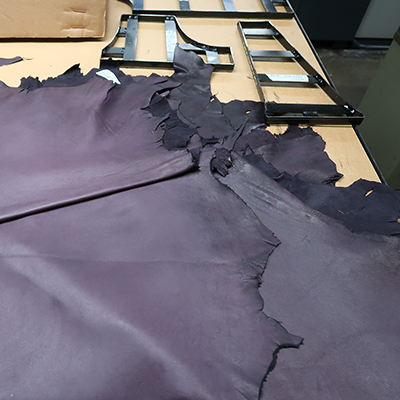
Image left: In the meantime, Pittard’s in house designer is conferring with Karen and Ellen to decide on the final specifications for the Agnes Bag. She will create two separate samples before the design is approved by Taylor Yates and ready to go into production. Once the patterns are confirmed, each piece is recreated in steel to form the press knives. These will be used to accurately cut each part of the pattern out of the hides.
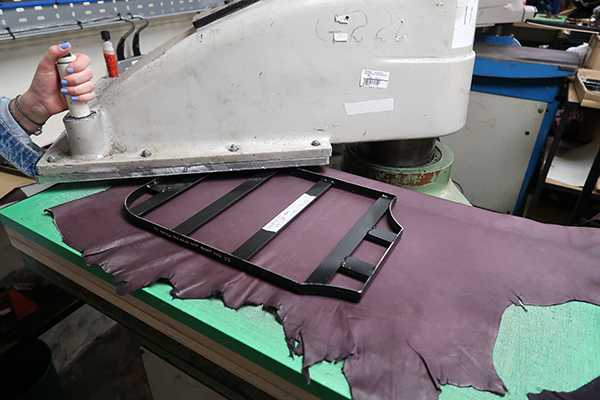
Step 3: The Elements Come Together
Image right: Once the pieces are cut, they are taken to the Making Studio and sorted into batches to create each bag. They are grouped together along with the linings, zips, labels and fixtures.
Image left: The Cutter selects the correct colours and textures for each bag by eye. He will fit as many pieces of the pattern onto a skin as possible before cutting the leather in order to minimize waste. The outside and unusable scraps are kept to be utilised later on. Taylor Yates have created several smaller styles such as the Doris and Lip Kit Bag to use these extra pieces.
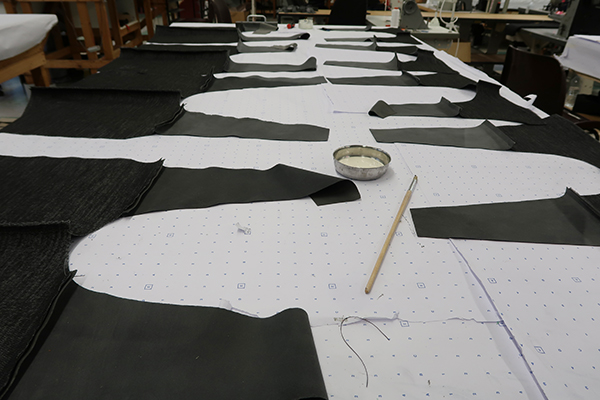
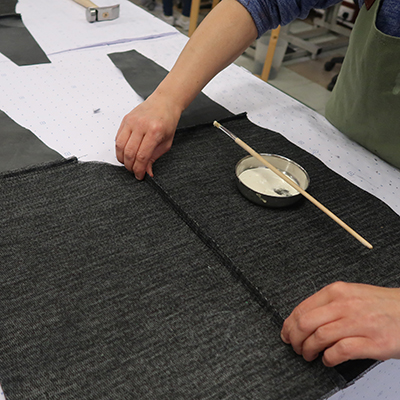
Image above: The main body pieces of the Agnes are prepared to be stuck together. A glue is used to fix the centre seams together.
Image below: Once applied, the glue must be tacky before being carefully hand folded to create each seam. It’s important that the seams lie perfectly flat so each one is checked in detail. If they don’t sit correctly, they are unstuck and corrected.

Image right: The lining of the bags receive the same attention to detail as the leather outers. A jig or template is used to align the leather label and zip frames before they are stitched together. Each piece is pressed onto the template by hand and fixed it into place.
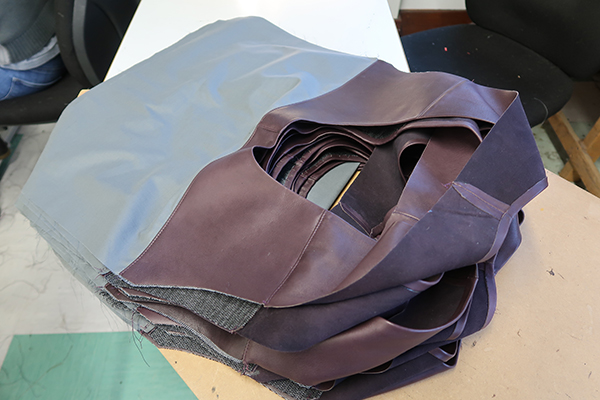
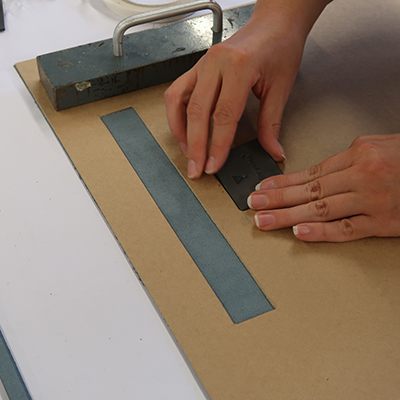
Image left: The lining is then attached to the top handle facing, this is known as In Stitching. Once this is complete, the pieces are collated together at the sewing station, ready to be stitched together to create the final bag.
Step 4: The Agnes Takes Shape
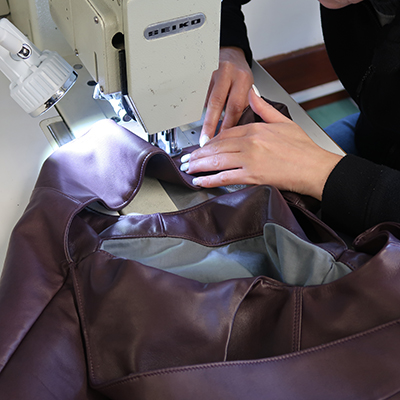
Image left: And there you have it, the finished Agnes bag. Don’t forget that you can purchase selected Taylor Yates bags with your £100 off discount code until 10th May. Click on the image and enter code VENDEUR100 at checkout.
Image left: In house seamstresses then perform the final top stitch of the handles. They work quickly but carefully. It takes on average one day for a team of 4 to complete the final handbags. On the day we visited, they worked on 2o Agnes bags. The entire design process however can take anywhere from 2-3 months or longer depending on the design and specifications.
With special thanks to the team at Pittards.
Disclaimer: This post was created in partnership with Taylor Yates. All images (except of Agnes bag) are the property of The Vendeur and should not be reused without prior written permission.

